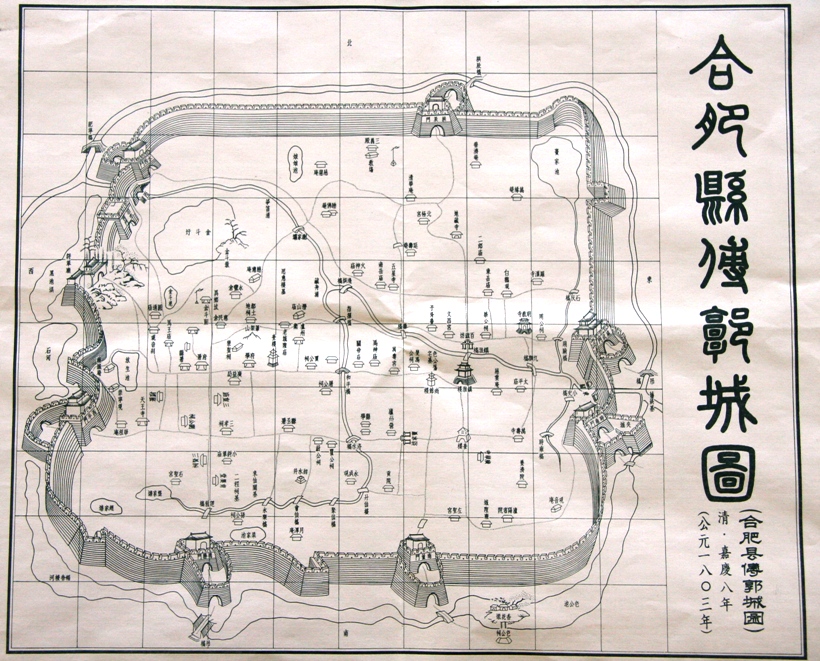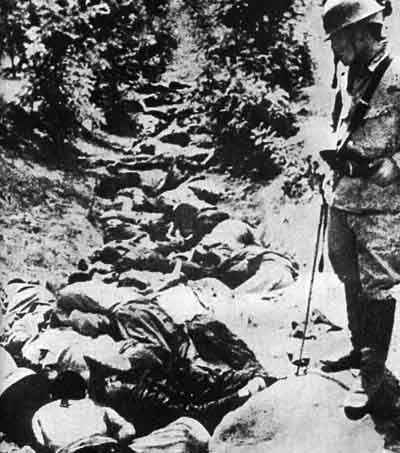|
China National Highway 206
China National Highway 206 (G206) runs from Weihai, Shandong Province to Shantou, Guangdong Province. It is 2,375 kilometres in length and runs south from Yantai, going via Shandong, Jiangsu, Anhui, Jiangxi Province, and ends in Guangdong Province. Route and distance See also * China National Highways The China National Highways (CNH/Guodao) () is a network of trunk roads across mainland China. Apart from the expressways of China that are planned and constructed later, most of the CNH are not controlled-access highways. History The bui ... {{China National Highways Transport in Anhui Transport in Jiangsu Transport in Shandong Transport in Jiangxi Transport in Guangdong 206 ... [...More Info...] [...Related Items...] OR: [Wikipedia] [Google] [Baidu] |
Weihai
Weihai (), formerly called Weihaiwei (), is a prefecture-level city and major seaport in easternmost Shandong province. It borders Yantai to the west and the Yellow Sea to the east, and is the closest Chinese city to South Korea. Weihai's population was 2,804,771 as of the 2020 Chinese census, of whom 1,164,730 lived in the current built-up (''or metro'') area of (Huancui District) even though Wendeng district to the south with 563,529 inhabitants is soon being conurbated. There are two county-level cities within Weihai; Rongcheng has a built up area with 714,211 inhabitants, while Rushan had 464,078 inhabitants in 2020. A subway is planned with 4 lines and route length to link all city districts. The first phase, Line 1 and 2 is planned for 2025. History Before the 14th century, Weihai was a minor fishing settlement. In 1398, during the Ming dynasty, it became a military stronghold (''wei'') to defend against raids by the wokou. The fortification at Weihai was constructed ... [...More Info...] [...Related Items...] OR: [Wikipedia] [Google] [Baidu] |
Ju County
Ju County or Juxian () is a county of Rizhao City, in the south of Shandong Province, People's Republic of China. As of the end of 2021, the total registered population of Ju County was 1.167 million. It covers an area of . The Fulaishan Scenic Area () is located on the western border of Ju County. It is noteworthy for an ancient ginkgo tree that grows in the center of the front yard of Dinglin Temple () and is believed to be nearly 4000 years old.The tree is 26.7 meters high and 15.7 meters thick, covering an area of more than 600 square meters. In 1982, UNESCO conducted a special study on this tree and broadcast its close-up to the world. Administrative divisions As 2012, this county is divided to 18 towns and 3 townships. ;Towns ;Townships *Zhailihe Township () *Guozhuang Township () *Kushan Township () Climate Famous people Liu Xie Liu Xie (about 467-539) Word Yan, lived in Dongguan in the Northern and Southern Dynasties, who is the writer of "Wenxindiaolong". ... [...More Info...] [...Related Items...] OR: [Wikipedia] [Google] [Baidu] |
Tongcheng, Anhui
Tongcheng () is a county-level city and former county in the southwest of Anhui province and is under the jurisdiction of the prefecture-level city of Anqing. Its population is and its area is . Tongcheng is noted for the Tongcheng School. Administrative divisions Tongcheng City has jurisdiction over 3 subdistricts, 12 towns and 2 others. ;Subdistricts * Longteng Subdistrict () * Wenchang Subdistrict () * Longmin Subdistrict () ;Towns ;Others * Tongcheng Economic Development Zone () * Tongcheng Shuangxin Economic Development Zone () Climate Notable people * Zhang Tingyu, advisor to three Qing Dynasty emperors * Chu Bo, the former governor of Hunan Province, and currently party chief in Inner Mongolia, was born in Tongcheng. * Fang Bao, author * Fang Lanfen, author * Fang Quan, author, Qing prefect * Fang Chih, Chinese diplomat * Gui Congyou, diplomat, appointed China's ambassador to Sweden in 2017 * Wang Wenbin, diplomat, one of the spokesperson for the Ministry of Forei ... [...More Info...] [...Related Items...] OR: [Wikipedia] [Google] [Baidu] |
Feixi
Feixi County () is a county of Anhui Province, East China, it is under the administration of the prefecture-level city of Hefei, the capital of Anhui Anhui , (; formerly romanized as Anhwei) is a landlocked province of the People's Republic of China, part of the East China region. Its provincial capital and largest city is Hefei. The province is located across the basins of the Yangtze River .... The county has an area of and a population of 858,895 inhabitants. Township-level divisions Towns * Shangpai (), Sanhe (), Taohua (), Huagang (), Gaoliu (), Guanxiang (), Xiaomiao (), Shannan (), Fengle (), Zipeng () Townships * Gaodian Township (), Mingchuan Township (), Shishugang Township (), Yandian Township () Other Areas *Taohua Industrial Park Management Committee (), Zipengshan Management Committee () Climate References Hefei {{Hefei-geo-stub ... [...More Info...] [...Related Items...] OR: [Wikipedia] [Google] [Baidu] |
Hefei
Hefei (; ) is the capital and largest city of Anhui Province, People's Republic of China. A prefecture-level city, it is the political, economic, and cultural center of Anhui. Its population was 9,369,881 as of the 2020 census and its built-up (or ''metro'') area made up of four urban districts plus Feidong, Feixi and Changfeng counties being urbanized, was home to 7,754,481 inhabitants. Located in the central portion of the province, it borders Huainan to the north, Chuzhou to the northeast, Wuhu to the southeast, Tongling to the south, Anqing to the southwest and Lu'an to the west. A natural hub of communications, Hefei is situated to the north of Chao Lake and stands on a low saddle crossing the northeastern extension of the Dabie Mountains, which forms the divide between the Huai and Yangtze rivers. The present-day city dates from the Song dynasty. Before World War II, Hefei remained essentially an administrative centre and the regional market for the fertile plain to the ... [...More Info...] [...Related Items...] OR: [Wikipedia] [Google] [Baidu] |
Huainan
Huainan () is a prefecture-level city with 3,033,528 inhabitants as of the 2020 census in north-central Anhui province, China. It is named for the Han-era Principality of Huainan. It borders the provincial capital of Hefei to the south, Lu'an to the southwest, Fuyang to the west, Bozhou to the northwest, Bengbu to the northeast and Chuzhou to the east. Huainan is one of the core cities of Hefei Metropolitan Circle and is known for its coal industry and thermal power plants. Its built-up area made of 4 urban districts (all but Panji not yet conurbated) and Fengtai County largely being urbanized, was home to 1,868,944 inhabitants as of 2020. Its city flower is the Chinese rose (''Rosa chinensis'') and its city tree is the Old-World Plane Tree (''Platanus orientalis''). It is also considered to be the hometown and birthplace of tofu. Administration The prefecture-level city of Huainan administers seven county-level divisions, including five districts and two counties. *Tianjia'a ... [...More Info...] [...Related Items...] OR: [Wikipedia] [Google] [Baidu] |
Suzhou, Anhui
Suzhou () formerly romanized as Suchow is a prefecture-level city in northern Anhui province. It borders the prefectural cities of Huaibei and Bengbu to the southwest and south respectively, the provinces of Jiangsu to the east, Shandong to the north, and Henan to the northwest. Its population was 5,324,476 inhabitants at the 2020 census whom 1,766,285 lived in the built-up area (''or metro'') made of Yongqiao urban district, even though it remains largely rural. History Suzhou was formerly Su County (). Administration Suzhou administers five county-level divisions, including one district and four counties. *Yongqiao District () *Dangshan County () *Xiao County () *Lingbi County () *Si County () These are further divided into 118 township-level divisions. Climate Suzhou has a monsoon-influenced, humid subtropical climate (Köppen ''Cwa''), with four distinct seasons. Winters are cold and damp, with average low temperatures in January dipping just below freezing; the January ... [...More Info...] [...Related Items...] OR: [Wikipedia] [Google] [Baidu] |
Xuzhou
Xuzhou (徐州), also known as Pengcheng (彭城) in ancient times, is a major city in northwestern Jiangsu province, China. The city, with a recorded population of 9,083,790 at the 2020 census (3,135,660 of which lived in the built-up area made of Quanshan, Gulou, Yunlong and Tongshan urban Districts and Jiawang District not being conurbated), is a national complex transport hub and an important gateway city in East China. Xuzhou is a central city of Huaihai Economic Zone and Xuzhou metropolitan area. Xuzhou is an important node city of the country's Belt and Road Initiative, and an international new energy base. Xuzhou has won titles such as the National City of Civility (全国文明城市) and the United Nations Habitat Scroll of Honour award. The city is designated as National Famous Historical and Cultural City since 1986 for its relics, especially the terracotta armies, the Mausoleums of the princes and the art of relief of Han dynasty. Xuzhou is a major city among t ... [...More Info...] [...Related Items...] OR: [Wikipedia] [Google] [Baidu] |
Jiawang District
Jiawang District () is a suburban district of Xuzhou, Jiangsu province, China. It is located in the northern part of Xuzhou and adjacent to the prefecture-level city of Zaozhuang, Shandong in the north. Its economy was overwhelmingly dependent on coal, but , the last local mine closed. History Some people of the environs settled in Jiawang nowadays, since the late Ming. The Jia clan among them set up home around a pool, thus the pool was called Jiajiawang, means"Jia Clan's Pool". Similar as Xuhui District for Xujiahui in Shanghai, Jiajiawang was simplified as Jiawang then. In the summer of 1880, a local peasant Zhou Mian discovered coals there, along with his fellows. They mined from an open-cast coal then sold. Later, according to Zuo Zongtang's request, local official Hu Jingzhi invited Hu Enxie, another official from Nanjing, to undertake the mining project in 1881, and a British mining engineer was hired for prospecting in the next year. The Cantonese businessman, Wu Weixion ... [...More Info...] [...Related Items...] OR: [Wikipedia] [Google] [Baidu] |
Yicheng District, Zaozhuang
Yicheng District () is a district of Zaozhuang Zaozhuang () is a prefecture-level city in the south of Shandong province, People's Republic of China. Since January 2019 (after the Laiwu prefecture got incorporated into Jinan prefecture), the smallest prefecture-level city in the province, it b ..., Shandong, China. It has an area of and around 360,200 inhabitants. (2003) Administrative divisions As 2012, this district is divided to 2 subdistricts and 5 towns. ;Subdistricts *Tanshan Subdistrict () *Wulin Subdistrict () ;Towns Climate References External links Information page {{authority control County-level divisions of Shandong ... [...More Info...] [...Related Items...] OR: [Wikipedia] [Google] [Baidu] |
Zaozhuang
Zaozhuang () is a prefecture-level city in the south of Shandong province, People's Republic of China. Since January 2019 (after the Laiwu prefecture got incorporated into Jinan prefecture), the smallest prefecture-level city in the province, it borders Jining to the west and north, Linyi to the east, and the province of Jiangsu to the south. The Battle of Taierzhuang occurred in the city during the Second Sino-Japanese War in 1938. The Second Sino-Japanese War (1937–45) had a significant impact on Zaozhuang. Archaeologists have found evidence of human activities in this region dating back to the Neolithic era. Its culture started from 7300 years ago of ancestor culture, and developed to city-state culture 4300 years ago, then evolved to canal culture 2700 years ago, and finally stepped to industrial culture 130 years ago. Its population is 3,855,601 at the 2020 census whom 975,539 in the built-up area made of Shizhong and Yicheng districts. History The history of Zaozhuang ... [...More Info...] [...Related Items...] OR: [Wikipedia] [Google] [Baidu] |
.jpg)


